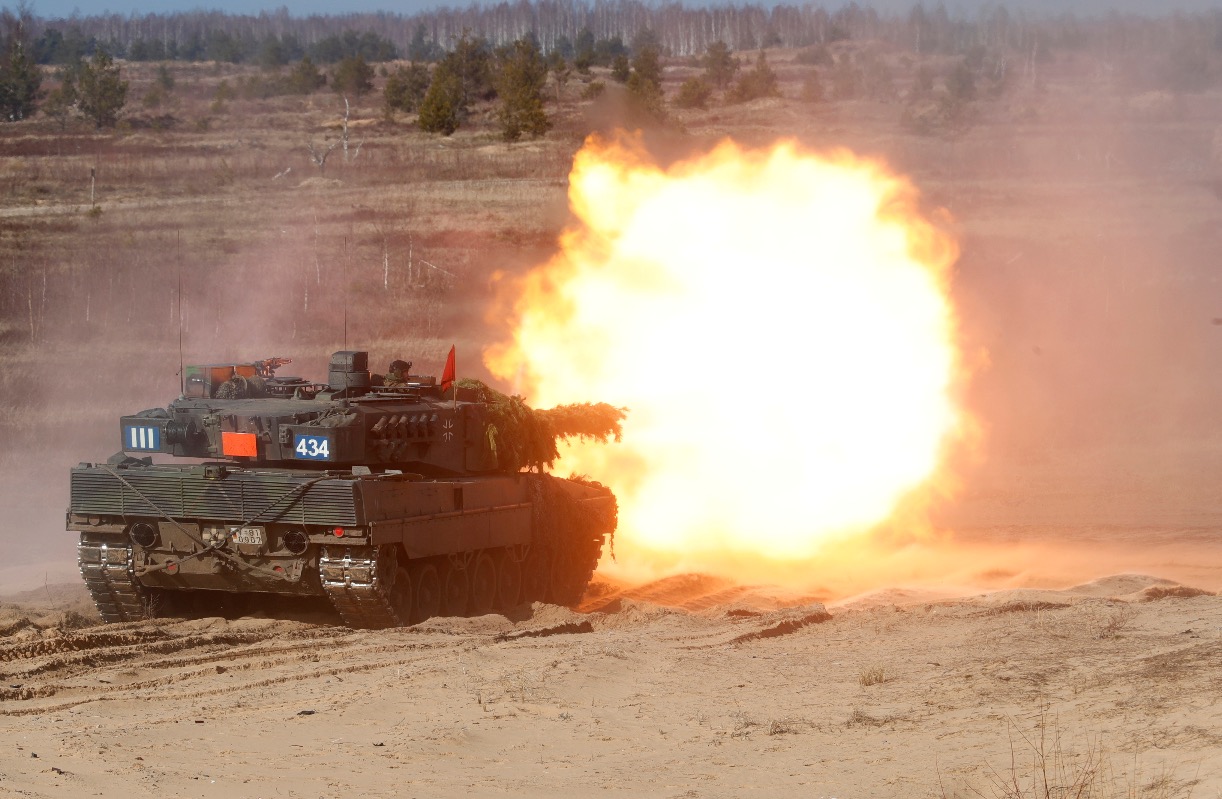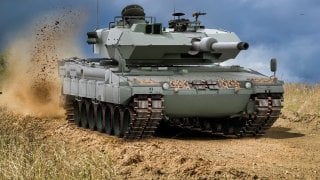The Royal Netherlands Army is Set to be a Tank Powerhouse
The Royal Netherlands Army has announced plans to establish a new tank battalion equipped with nearly 50 advanced German-made Leopard 2A8 main battle tanks (MBTs).
Summary and Key Points You Need to Know: The Royal Netherlands Army has announced plans to establish a new tank battalion equipped with nearly 50 advanced German-made Leopard 2A8 main battle tanks (MBTs).
-This decision marks a significant commitment by the Netherlands to NATO and its defense spending goals.
-The move comes after the country phased out its tanks following the Cold War, relying on leased Leopard 2 tanks from Germany.
-The Leopard 2A8, one of the world's most advanced tanks, features upgraded armor, a 120mm L55 smoothbore gun, and an active protection system.
-This marks a strategic rebuild of the Netherlands' armored force.
Netherlands Revives Tank Battalion with 50 Leopard 2A8 MBTs
The Kingdom of the Netherlands was a founding member of NATO, and though by no means a global superpower – it was one of the European nations that had an overseas "empire." The Netherlands didn't fare all that well during the Second World War, as it was quickly overrun in Europe by Nazi Germany while the Dutch East Indies fell to the Japanese.
Since 1949, with the founding of the international alliance, the Netherlands has remained a committed NATO member. That fact is increasingly clear as the Dutch military announced this week that it would establish a new tank battalion.
NRC reported last week that the new unit will be equipped with nearly 50 German-made Leopard 2A8 main battle tanks (MBTs), the latest variant of the Leopard 2 and among the most advanced tanks in service in the world today. The announcement that the Royal Netherlands Army will again operate a full armored battalion comes as the Dutch remain committed to meeting the NATO defense spending goal of 2% of the country's Gross Domestic Product (GDP)
According to Army Recognition, "To achieve this, the Defense Budget, currently at 21.4 billion euros of 1.95 percent of GDP, will be structurally increased to 2.4 billion euros."
History of Dutch Armor
The origins of Dutch armored warfare can be traced to the colonial Aceh War (1873-1914), fought in the Dutch East Indies – today Indonesia. The conflict saw the use of two armored train carriages, which were deployed on the Kota Radja Tramway, although their actual effectiveness remains a matter of debate.
The Netherlands was neutral during the First World War, but like other non-combatant nations certainly observed the birth of armored warfare on the Western Front. In the 1920s, the Dutch Ministry of War acquired a single French-made Renault FT tank, and later the armored force was expanded with the purchase of Carden-Loyd Mk. VI tankettes from the UK.
It was hardly a noteworthy force, even in the interwar era.
"What all these vehicles had in common was that they had little to no combat value, and were mainly suited for training or policing duties," Tanks-Encyclopedia.com explained.
Tanks and armored cars played almost no defensive role when the nation was invaded in the spring of 1940, but the Royal Netherlands East Indies Army – known as the KNIL – operated six British Vickers light tanks. While almost on par with the Japanese tanks of the era, the vehicles were worn out due to extensive use in training!
The Cold War Tank Fleet
The Kingdom of the Netherlands was among the NATO members that saw the need for tanks during the Cold War, and at its height had nearly 1,000 fully operational armored vehicles – with it operating the Leopard 1 and later Leopard 2. With the end of the Cold War and the dissolution of the Soviet Union, the force was significantly reduced.
Due to budget cuts, the tanks were gradually phased out.
"Without a single tank left to support its ground operations, the country leased 18 Leopard 2 tanks from Berlin in 2015, but these were integrated into a German unit and stationed abroad," The Defense Post reported, and it added, "The decision to get rid of all its tanks has been a persistent issue for the Royal Dutch Army."
Starting With the Best
The Leopard 2A8 is the most advanced version of the famed German MBT. Based on the Leopard 2A7+, the new model is outfitted with several notable improvements, including the "Trophy" Active Protection System and a better all-around (360-degree) awareness system.

The upgraded variant features the newest generation of passive multi-layer composite modular armor – made up of steel, tungsten, composite filler, and even ceramics.
The tank is fitted with a three-man turret that houses the main 120mm L55 smoothbore gun produced by Rheinmetall AG. This is an upgraded version of the L44 gun installed on previous models of the Leopard 2. The L55 is reported to be about 1.3 meters (4.2 feet) longer, which gives it higher muzzle velocities, and it has greater accuracy, range, and penetration. The improved gun can fire a variety of ordnance, including APFSDS (Armor-Piercing Fin-Stabilized Discarding Sabot), HEAT (High-Explosive Anti-Tank), and multipurpose ammunition.
The overall layout of the modernized tanks is similar to other models. It is powered by an upgraded 1,600 hp engine that allows the Leopard 2A8 to reach speeds over 70 kilometers per hour (44 miles per hour).
The Royal Netherlands Army is now looking to rebuild its tank force, and having 50 Leopard 2A8s will be a good start.
Author Experience and Expertise: Peter Suciu
Peter Suciu is a Michigan-based writer. He has contributed to more than four dozen magazines, newspapers, and websites with over 3,200 published pieces over a twenty-year career in journalism. He regularly writes about military hardware, firearms history, cybersecurity, politics, and international affairs. Peter is also a Contributing Writer for Forbes and Clearance Jobs. You can follow him on Twitter: @PeterSuciu. You can email the author: [email protected].
Image Credit: Creative Commons and/or Shutterstock.


